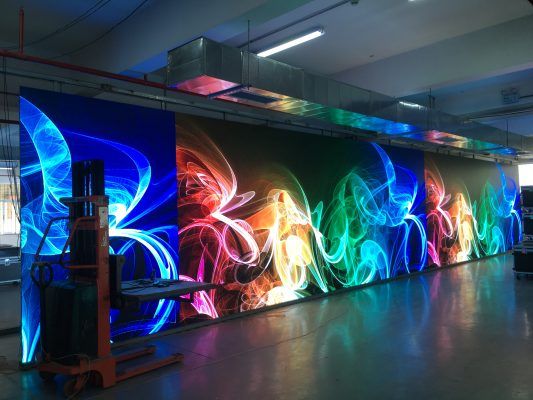lai klienti varētu noteikt led displeja produktu kvalitāti, sekojoši deviņi svarīgi displeja priekšmeti ir sintezēti no dažādiem aspektiem. pirmie astoņi priekšmeti ir piemēroti vispārējam led displejam, savukārt devītais priekšmets ir paredzēts mazam atstarpes led displejam.
i. spilgtums:
maksimālais spilgtums attiecas uz led displeja ekrāna katras primārās krāsas spilgtumu augstākajā pelēkā līmenī un spilgtumu noteiktā apkārtējā apgaismojumā. Īsumā, spilgtums, ko mēra ar gaismas pistoli parastā virzienā, kad displeja ekrāns ir iestatīts uz baltu 255 ar programmatūru. āra led displejam, atbilstoši vides izmantojumam, maksimālajam spilgtumam būs atšķirīgas prasības, jo spēcīgas vides gaismas gadījumā, LED displeja spilgtumam jābūt lielākam, lai cilvēki skaidri redzētu ekrānā parādīto saturu. vispārīgi runājot, displeja ekrāna maksimālā spilgtuma nepieciešamība ir mazāka, ja tas atrodas dienvidos un ir vērsts uz ziemeļiem. kamēr tas sasniedz 4000cd / m2, tas var izpildīt prasību. displeja ekrānam, kas sēž ziemeļos un ir vērsts uz dienvidiem, visa ekrāna spilgtuma nepieciešamība var sasniegt 7000 cd / m2. prasība vērsties pret austrumiem un rietumiem ir tāda pati kā pret dienvidiem, because there will be a part of the time when the sunlight will directly shine on the led display. uz ekrāna. teorētiski, brightness requirements greater than 5500cd square meter brightness is enough.
divi. color temperature
when we see that the color of the image is different from the material on the display screen, mūsu attēls būs nopietni sagrozīts, which is related to the color temperature of the white balance of the led display screen. if the human eye watches the display screen directly, the color temperature of the white balance will be between 6500 and 8000k, which is suitable for tv broadcasting stations. on the display screen, the actual color temperature of the screen needs to be adjusted to about 5500 k, so that the picture on the display screen is real after recording and broadcasting by the camera.
3. atjaunošanas biežums
the refresh rate refers to the number of times the display information of the led screen sign is displayed in full every second. when the refresh frequency is too low, the human eye will jitter when watching the led display. usually when we use the camera to shoot, we will see the scanning line. usually the refresh frequency of the human eye is more than 300 hz, tas ir, the refresh rate is only more than 300 hz, there is no sense of jitter when viewing the led display screen with the naked eye. if the camera is used to shoot, according to the different settings of different cameras, the minimum requirement is more than 600 hz to capture the scanning line. high refresh can improve the brightness and color fidelity of the display screen. it can be detected with a digital camera. if it is high refresh, the picture taken by the camera is very clear, there are no snowflakes and scanning lines. šis rādītājs ir īpaši svarīgs, nomājot ekrānus un televīzijas pārraides.